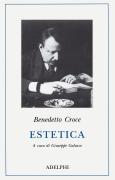Estetica

By publishing the Aesthetics, in 1902, Croce suddenly revealed himself to be the creator of a mighty architecture of thought, which was based precisely on aesthetics and would later be articulated in a "philosophy of the spirit". With a procedure that was congenial to him and corresponded perfectly to his presuppositions, Croce proposed in this book a treatment that was composed "of a theoretical part and a historical part, that is, of two independent books, but which help each other". In the theoretical part, from the very first lines Croce moves towards the enunciation of his fundamental thesis: art is intuition, while in turn "to intuit is to express; and nothing else (nothing more, but nothing less) than to express ". On the basis of this assumption, the discussion then proceeds with peremptory consequentiality. And so we see falling before our eyes, like cardboard wings, a number of notions acquired on art, over the centuries, which do not stand up to this new speculative challenge. Finally, in the historical part, which for him, as always, is indispensable support for every theoretical proposition, Croce shows us how, through the various theories and controversies on beauty, from Baumgarten to Kant, from Vico to Hegel, in modern culture, as well as in the ancient disputes, from Aristotle to Plotinus, a conception of beauty and poetry that subtracted the latter from all heteronomy and rhetorical functionality was brought to light several times, only to be submerged as often. This was precisely Croce's conception, which here unfolds with grandiose eloquence and vis polemica - and remains fundamental even today, for anyone who returns to the aesthetic problem in every sphere.